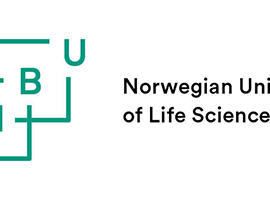
Partner 9: Norwegian University of Life Sciences (NMBU), Norway
The Norwegian University of Life Sciences is Norway‟s leading research and education establishment in the Environmental and Life Sciences. The Department of Plant and Environmental Science at NMBU carries out education and research activities, funded through both governmental research budgets and external research contracts. The Department of Plant and Environmental Sciences (IPM) at NMBU has an internationally recognized expertise in environmental risk assessment of radionuclides and other pollutants, and especially source-term speciation, radioecology and social and ethical aspects of risk management. The department has been actively involved in EU projects within the nuclear education and training area (EURAC, ENEN-II, CINCH), and in other EURATOM projects within 3rd - 7th FP (ARMARA, ADVANCE, REMOTRANS, ESTABLISH, ERICA, STRATEGY, EURANOS, PROTECT, STAR, DoReMi, CINCH), and has experience from more than 50 ntional, bilateral and international projects (NATO, IAEA etc.) during the last 15-20 yrs. They will bring this experience to activities in WP1, 2, 3, 4 and 5. Staff members contributing to COMET. Staff members contributing to COMET:
Prof.Brit Salbu is Head of Isotope Laboratory and of the Environmental Chemistry Section within the Department of Plant and Environmental Sciences at UMB. She has more than 25 years of experience in radiochemistry, radioecology and environmental impact assessment, and published about 190 articles in peer review literature. She has been a member of a series of national and international research committees, has participated in more than 50 national, bilateral and international projects – including 15 EU projects. She has also been chair of the NATO Nuclear/radiological Expert Group. She is member of the Norwegian Academy of Science and fellow of the Royal Society in chemistry. Her main contribution to COMET will be to WP1 and WP3, leading task 3.1.
Prof. Lindis Skipperud is deputy head of Isotope Laboratory/ Environmental Chemistry Section with 17 years of experience within environmental chemistry, radiochemistry and radioecology, and has published over 100 papers in the international literature, more that 40 is in peer-review journals. She is responsible for managing courses and laboratory training at the Isotope Laboratory and is substantially involved in post-graduate education including the European MSc program in Radioecology. She has been actively involved in EU projects within nuclear education and training area (EURAC, ENEN-II, STAR and CINCH) and also other EURATOM projects (ARMARA, ADVANCE, REMOTRANS, ESTABLISH). Her main contribution to COMET will be to WP2 and WP5, leading tasks 2.5 and 5.4.
Prof. Deborah Oughton has a PhD in radiochemistry (Univ of Manchester, 1989) and is professor in Environmental Chemistry, head of the PhD Research School in Ecotoxicology, and the ethics co-ordinator at the UMB. She was lead contractor in the EU projects ERICA (where she managed the 50 member end-user stakeholder group), PROTECT, STRATEGY and, and is currently involved in the 7th FP NERIS (on the NERIS management board), STAR and DoReMi/Melodi (on the E&T board of Melodi). She has worked on assessment of the effects of ionizing radiation on non-human biota since the late 1990s, and has published over 130 papers in the international literature. Her main contribution will be to WP3 and WP4, leading the task 4.4.
Ass. Prof Dr Ole Christian Lind has 15 years of experience within environmental chemistry, radiochemistry and radioecology with 16 peer reviewed articles. He is responsible for the Co-60 gamma irradiation facility at UMB. His main expertise is speciation of radionuclides including characterization of radioactive colloids and particles and also has experience with implementing properties of radioactive particles into atmospheric transport models. His main contribution will be in WP4.
Scientist Turid Hertel-Aas has a PhD in radioecology/biology and her main expertise is related to ecotoxicology. She has been working with earthworms for over 9 years and has experience from both uptake (radiolabelled nanoparticles and radionuclides) and effect studies. She has been involved EU projects ERICA, PROTECT and STAR. Within ERICA she was responsible for studying the effects of chronic gamma irradiation on reproduction endpoints and DNA integrity in earthworms exposed during two generations. Her main contribution will be into WP4.
The CERAD CoE is designed to perform long term fundamental research to substantially improve the ability to accurately assess the radiological risks from environmental radioactivity, also combined with other stressors. By focusing on key factors contributing to the overall uncertainties, CERAD will represent a state-of-the-art research foundation for the advancement of new tools and methods needed for the better assessment and management of those risks.
